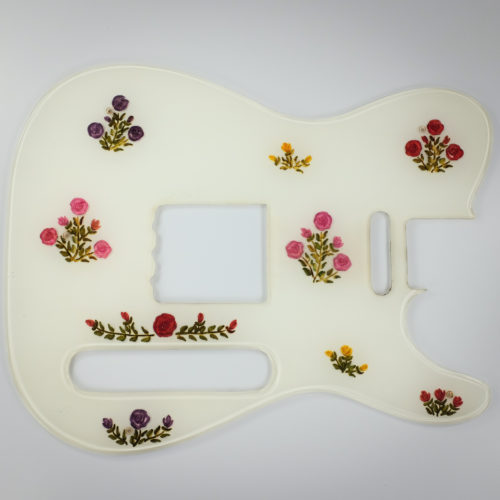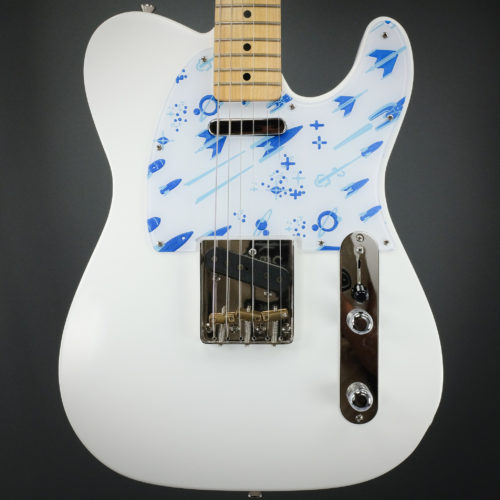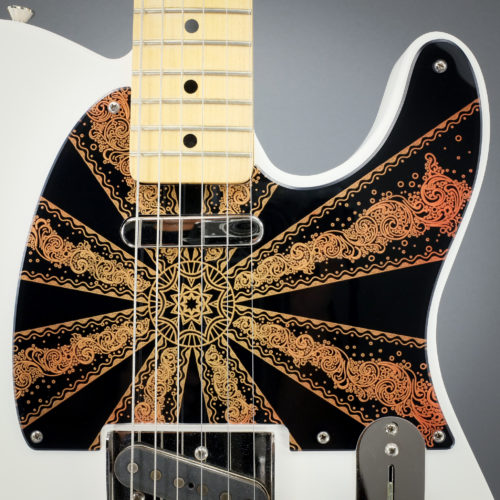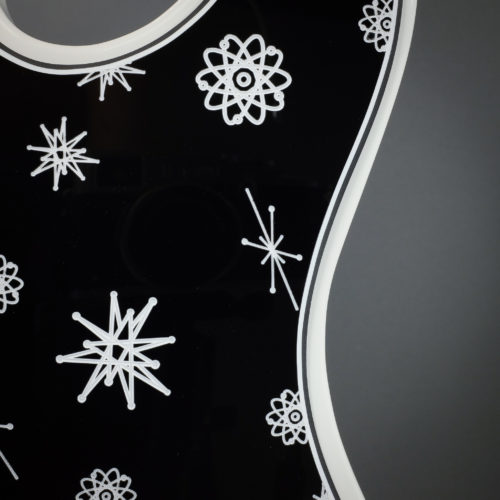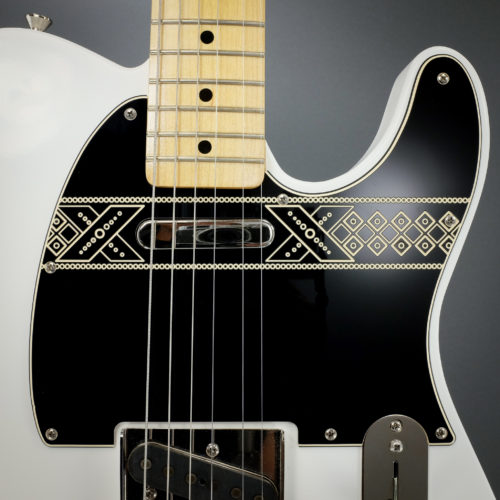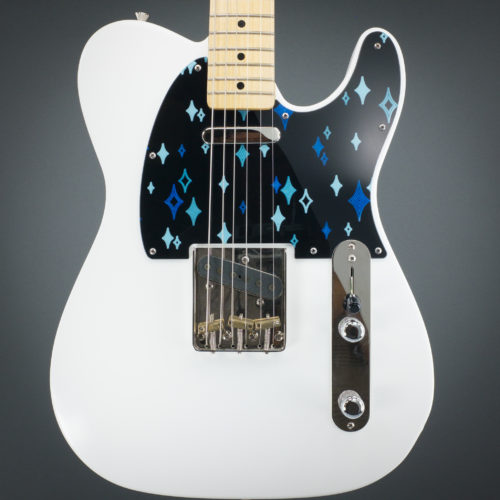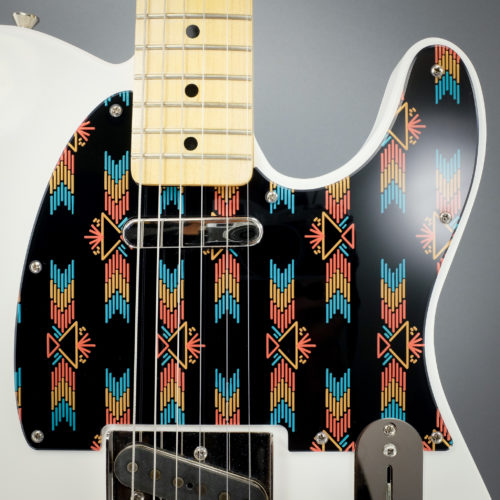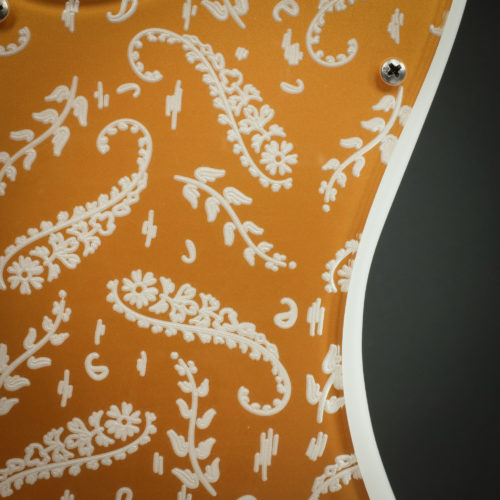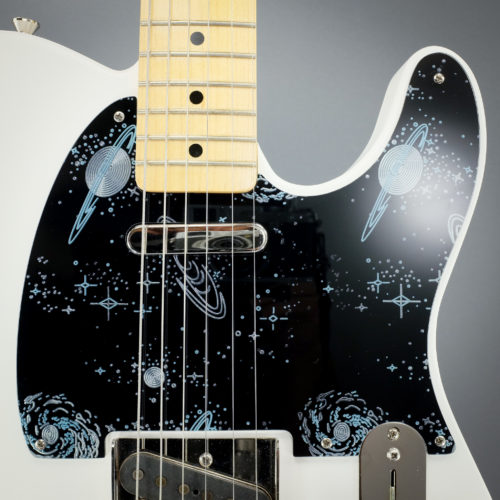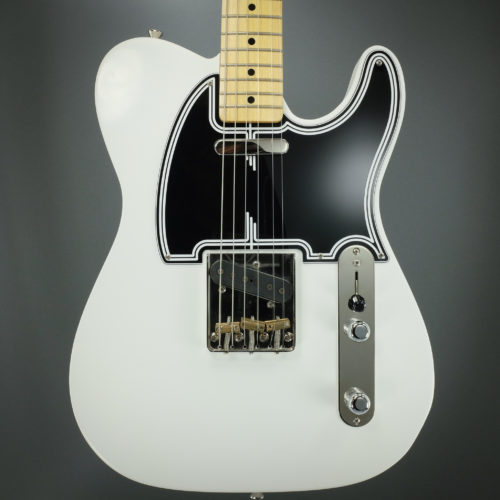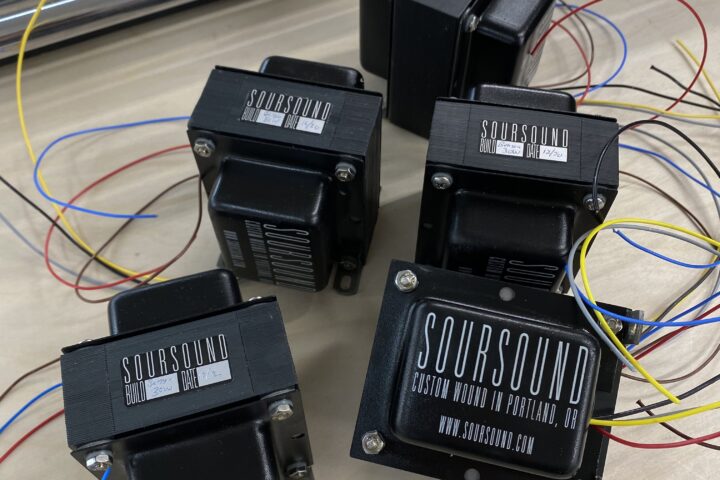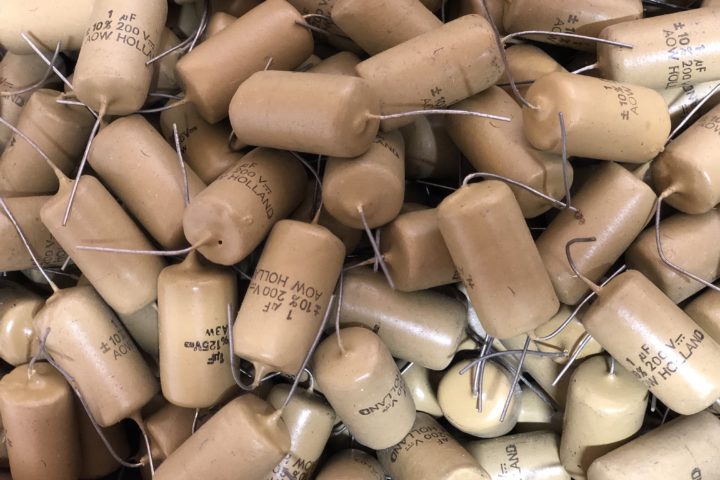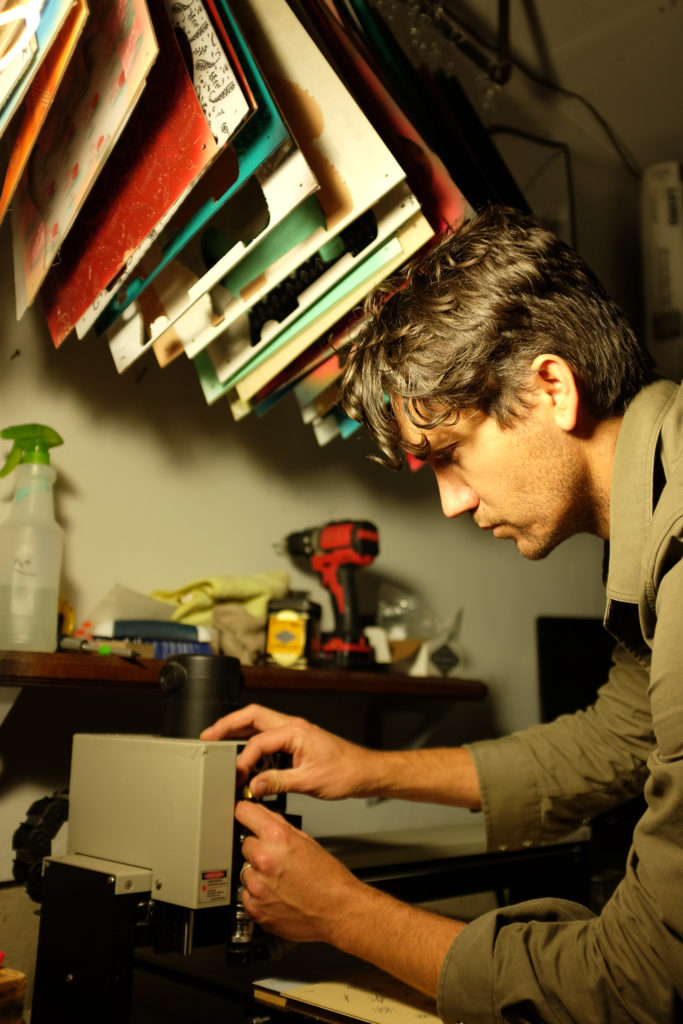
You might have noticed the Bench Press making a few odd twists and turns as its evolved. We’ve talked to a few amp builders and a custom pedalboard maker already, and you can look forward to conversations with folks making hardware and pickups in the near future. This time around we’re getting particularly particular, talking to Andrew Bingham of Decoboom, who has carved out a neat little niche for himself, designing and manufacturing extraordinary custom pickguards.
Fretboard Journal: Can you tell us a little about your background, how you got started, and, naturally, why pickguards?
Andrew Bingham: For as long as I can remember I’ve had an obsession with vintage guitars and other consumer products of the ’40s and ’50s, and I went on a collecting frenzy several years ago. It started with guitars, but I also began finding all sorts of amazing midcentury products that used plastic in amazing ways. For instance my old Webcor reel-to-reel machine has these clear cast acrylic parts that are hand-painted from the back. It was this reverse-painted method that really caught my eye.
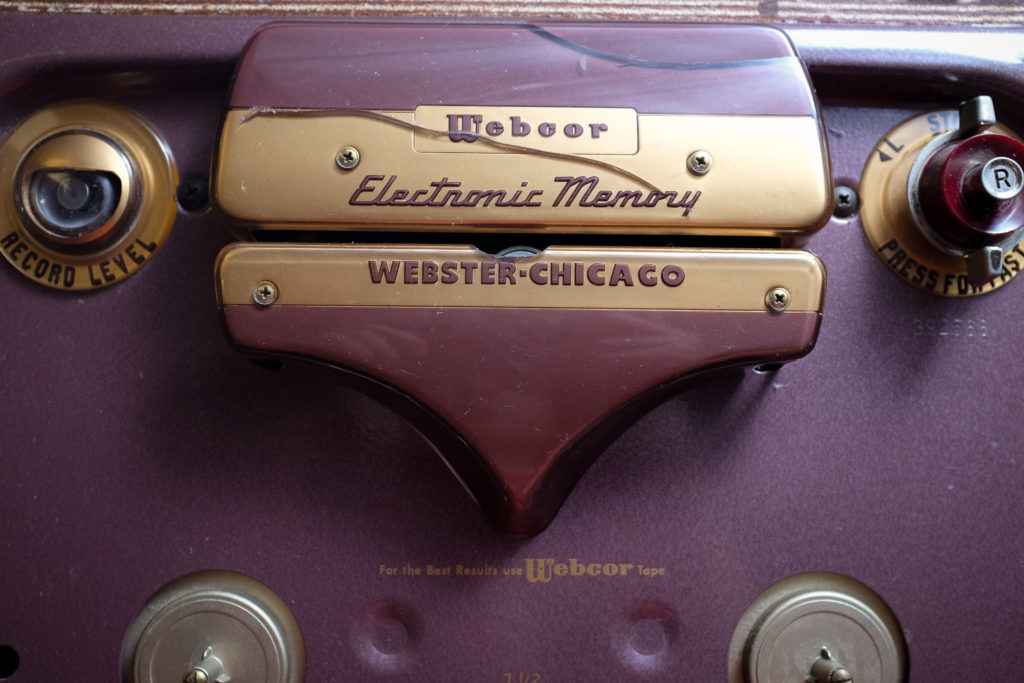
Soon I noticed that this reverse painting technique on acrylic was also used on the original Gretsch pickguards, where the logo would pop out at you from the back of the guard. Kay had a similar thing going with the Kelvinator headstocks, and of course a lot of lapsteels used decorative acrylic over the fingerboard.
Over time, I became convinced that I needed to bring this design technique back, and I took the leap to create Decoboom. First on my list is to transform what we think of pickguards. I see no reason why black, white, or mint need to be the extent of our choice.
FJ: Do you have a particular tradition that inspires your work?
AB: There is something very inspiring about the midcentury era of manufacturing and design—where amazing craftsmanship and design were put into creating mass goods. At the time, plastic was a cool, space-age thing, so they weren’t ashamed to use it as a decorative element.
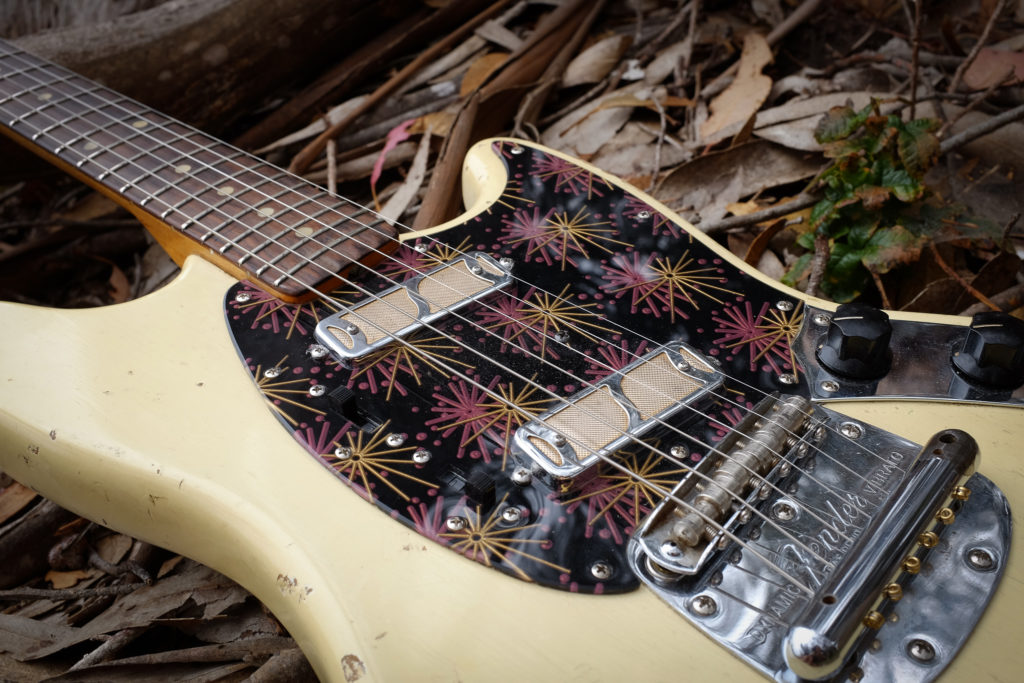
In our current mindset, it’s almost a knee-jerk reaction to equate plastic with “cheap” or “fake.” But unearthing all these awesome plastic pieces from the midcentury industrial boom convinced me that we’re looking at this the wrong way. Plastic is not the devil—careless craftsmanship is.
I think you can see in the marketplace how we are aching for good craftsmanship, and I’m glad to see both large and small guitar builders make their mark on the industry with quality goods. But while many in the industry are fretting over where to source AAAA flamed maple, or how to get an extra nanosecond of sustain out of the guitar body, my goal is to simply inspire creativity, by spending a whole lot of time and care over that little forgotten chunk of plastic that has graced guitars from the beginning.
Thankfully, people are responding, because I think those of us still in love with guitars want to feel like that little kid in the pawn shop again—that innocent time before we worried about perfect tone, infinite sustain, or spalted maple—and we just stared at that red guitar hanging there, daring us to pick it up. Visual appeal matters more than we think, and it doesn’t have to be expensive or snooty; it simply needs to inspire that little kid inside of us, that has a few extra bucks of wadded cash in his pocket and just wants to buy something cool. That kind of connection with guitars is very important to drive creativity. Hopefully Decoboom can fuel that to some degree.
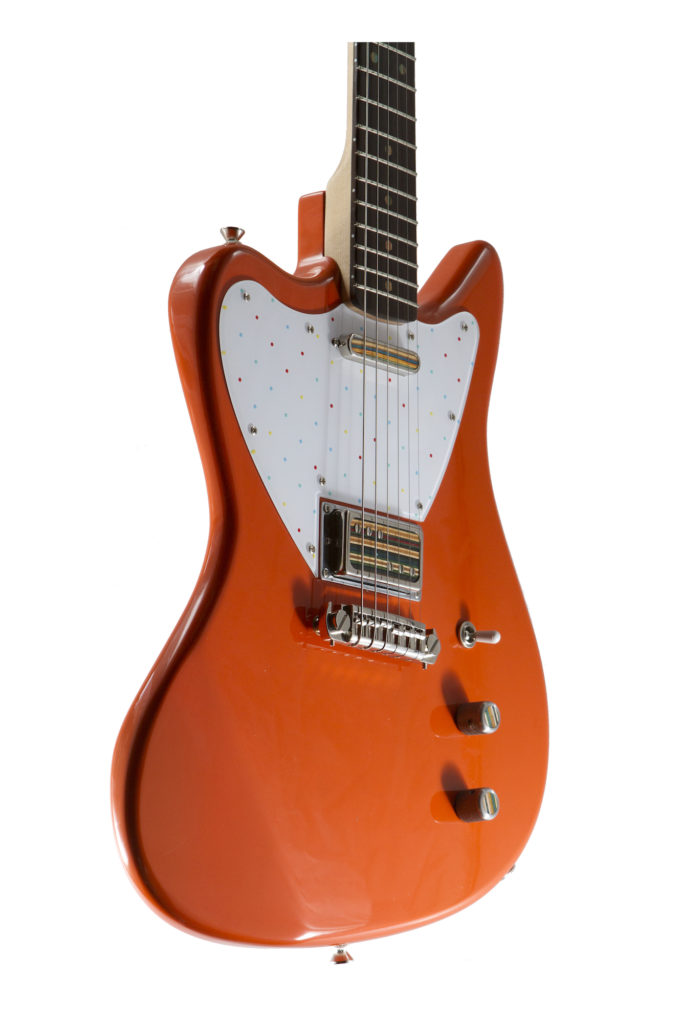
FJ: You have a lot of cool “off the shelf” offerings; do you do custom work as well?
AB: I do a lot of custom work for retail customers—weird pickguard shapes and custom pickup routes are my specialty. I continue to roll out new designs for pickguards, and we’re at the point where there are well over a hundred different colors and options. And soon I will also be rolling out some further custom options for retail customers—like putting custom text on a pickguard or a neckplate.
I also do speciality work for guitar builders. For example, I collaborated with Prisma Guitars on creating a pattern we call “Dots at the Beach” for their Sunset Series guitars.
FJ: Tell us about your shop – where are you located? Anything unique or interesting we should know about your space?
AB: I live in a small town on the central coast of California, Los Osos. It has no streetlights, no sidewalks, and a real old-school feel to the place. My shop is as homegrown as you can get; no offshoring or outsourcing here. I run the shop out of my little garage, where I do all the design and manufacturing. Working out of the home means I have lunch with my family every day, and then I dive right back into the shop to get stuff done. It’s a busy operation, and proximity to home is a blessing and a curse. My little two-year-old son already resents my work, because when I try to go back to work he often says “Daddy all done pickguard.” Soon he’ll resent Decoboom even more, because as soon as he can operate the tape dispenser he’ll go on packaging duty.
FJ: What are you working on at the moment?
AB: Well, this amazingly unique full-face pickguard just came into the shop off of a 1953 Telecaster, and I’m working on creating a replica for the current owner. The guard covers the whole face of the guitar, with intricate artwork that is cast from the backside of the the acrylic and then painted. It’s fun for me to have this time capsule from the past that reflects so closely the work I’m doing nearly seventy years later.
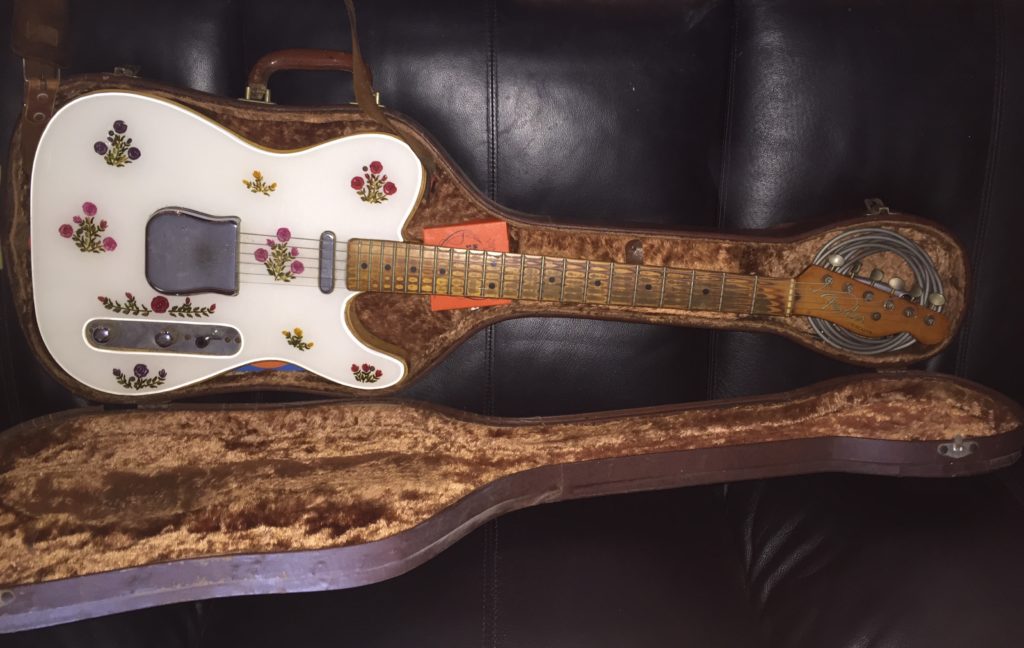
Another part of this story is the puzzling origin of the guard. There are screw-holes indicating that it had a regular blackguard at some point, so we’re skeptical that it came from the Fender factory with a full-face guard like this—but who knows. If it was added, we know from pictures and records that it would have been added soon after the original owner purchased the guitar. Redd Volkaert has a Telecaster that is a twin to this one—with the same white, full-face guard featuring slightly different colors painted on the roses. We have some detective work to do, but in any case I’m excited to translate this piece of guitar history into into a unique pickguard we can offer to other Tele nuts.
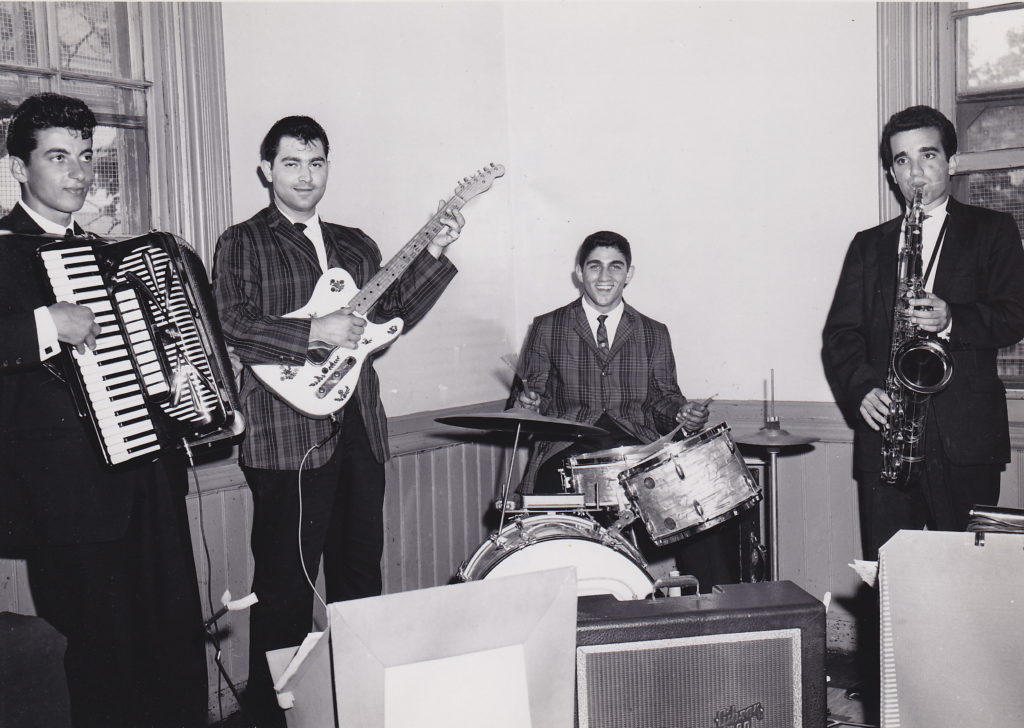
FJ: What can you tell us about the materials and construction techniques you’re using? Anything unorthodox or new?
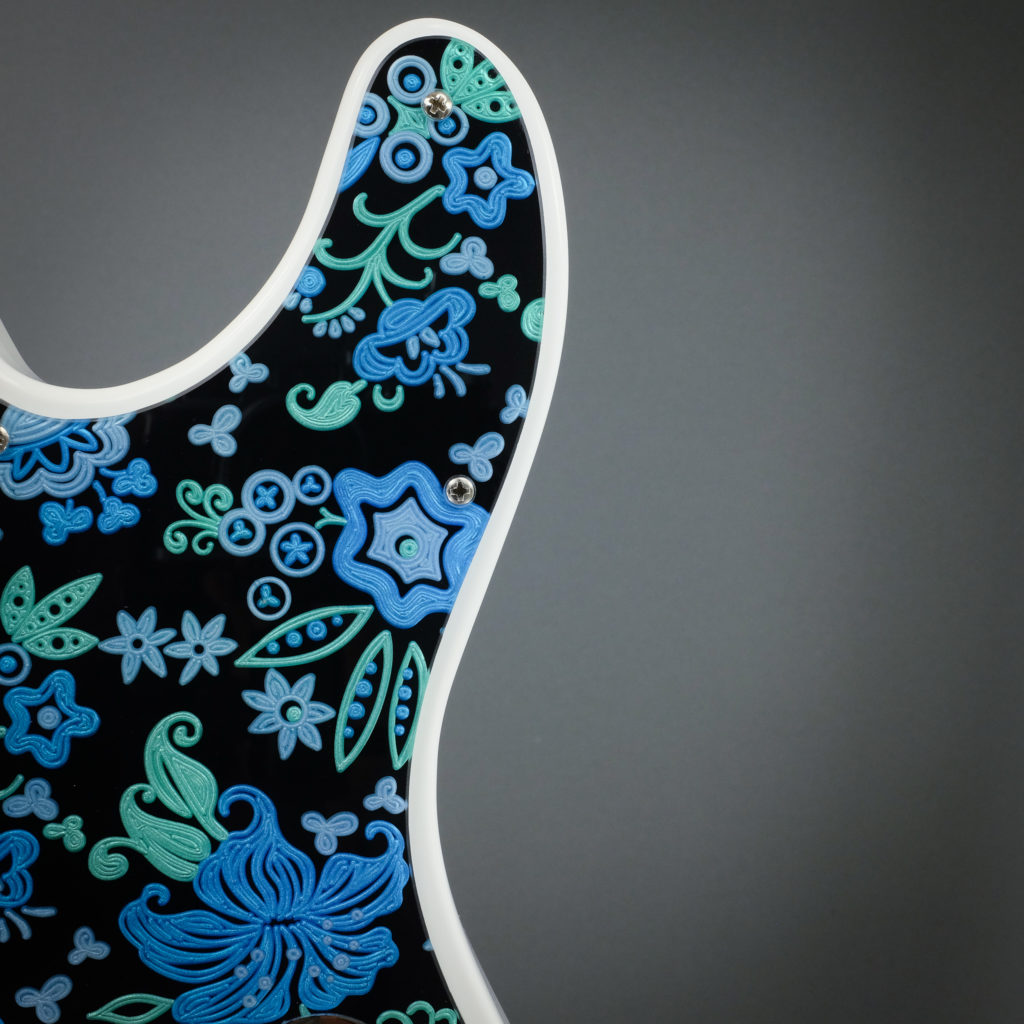
AB: My materials come from trusted suppliers here in the US. They do some amazing custom laminations that allow me to do what I do. For all the engraved work I use a modified acrylic material that is extremely durable and offers the perfect amount of flexibility for pickguards. Most acrylic pickguard materials I’ve seen on the market are too rigid and brittle for pickguards, and they are prone to cracking over time. My materials engrave and cut cleanly, and hold up to the rigors of guitar bashing. I also offer standard pickguard materials—i.e. mint, parchment, bakelite, and celluloid tort, for those looking for a more traditional look.
I engrave the guards using a CNC, which requires precise drafting at the programming stage. Some of the designs have thousands upon thousands of little vector lines to be programmed in, and I draw those in by hand using a digital pen, one by one. I don’t take shortcuts with my artwork.
Once the programming is done, I load the CNC with carbide-tipped steel tools, with various profiles and shapes, depending on the visual effect I want to achieve.
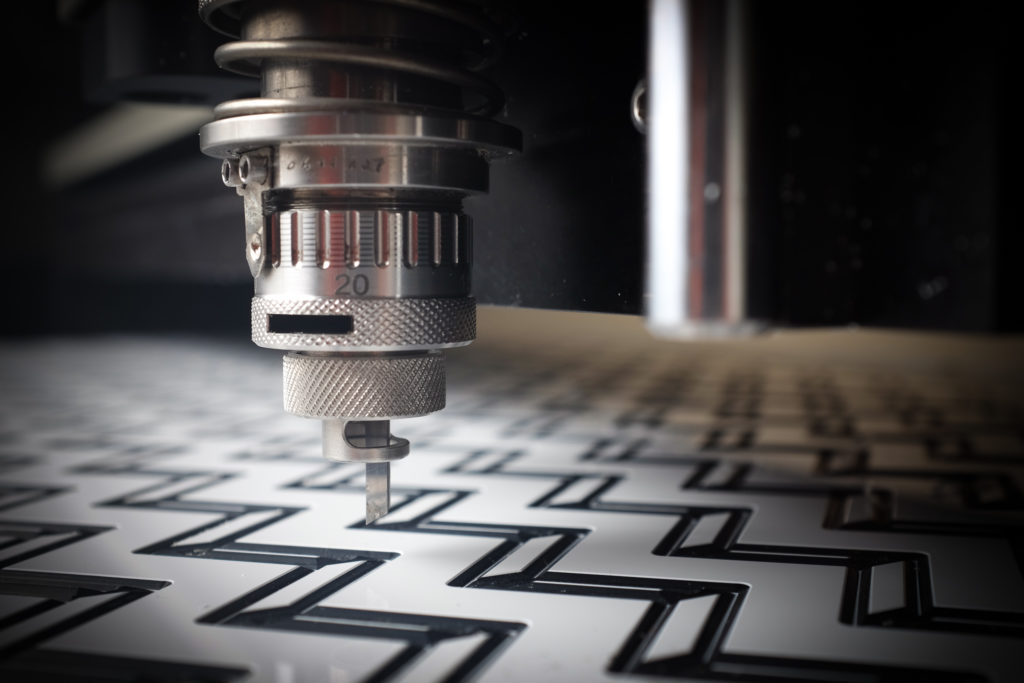
Some of the guards are engraved from the front with a custom 3-ply material.
Others are engraved from the back into a clear acrylic layer, and then painted by hand on the back side. It’s a very time-intensive process, but it gives the engraved elements a real dimension.
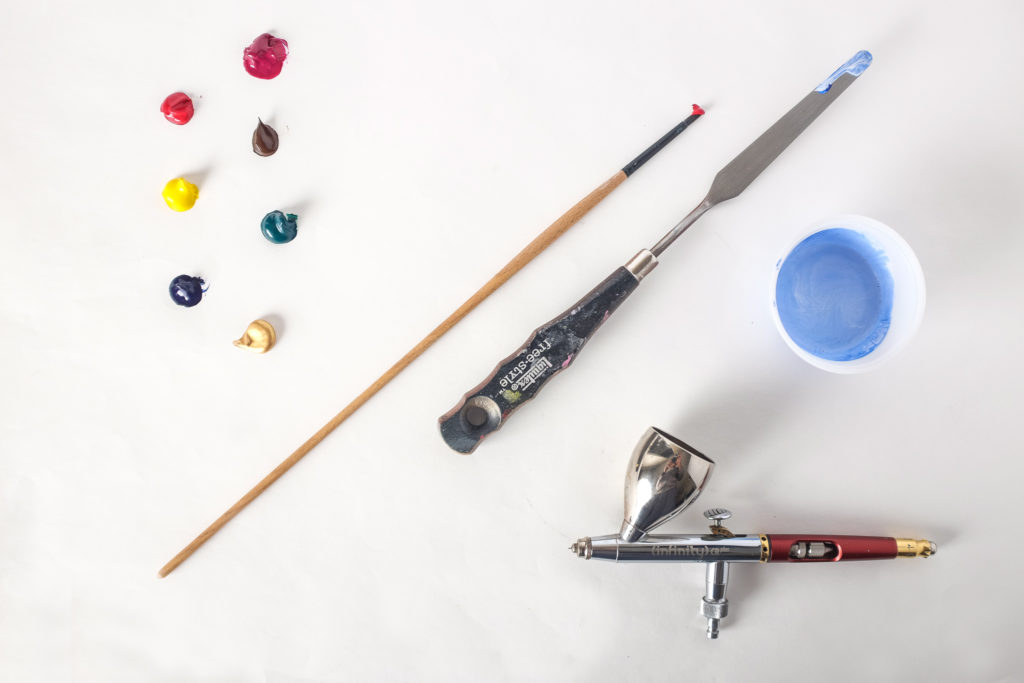
High-tech printers can put artwork on plastic now, but it still doesn’t look “right” to me to put printed materials on a guitar. That’s why I go to so much trouble to engrave and paint these guards so they fit in with instruments that were designed in the 40s, 50s and 60s.
All of these are pieces of art that will last forever because they are engraved, and the painted elements are completely protected from wear and tear.
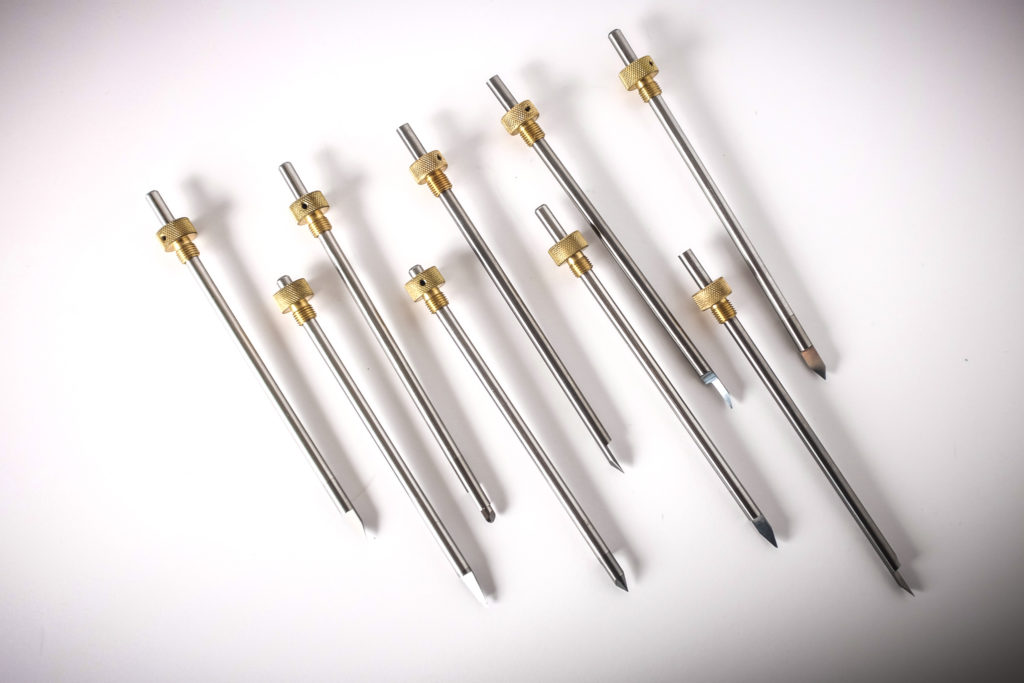
FJ: Anything coming up in the future you are particularly excited about?
AB: Lots of things, but I’m most excited about the pickup covers we’ll be offering soon. We’re going to shake things up with some engraved designs to insert in open humbucker covers. We’ll use use our special engraving/painting technique to bring some color to the party. Stay tuned.
FJ: What’s your typical turnaround?
AB: We typically turn things around in 10-14 days.
